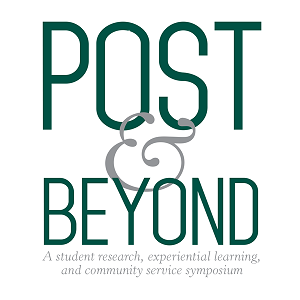Assessing the Quality and Evolutionary Information Provided from Non-Targeted Mitochondrial Sequences Gathered from an Exome Sequencing Study
Faculty Mentor
Scott Santagata
Area of Research
Phylogenetics and Diversity
Major
Biology
Description
Evolutionary investigations cataloging the diversity of living organisms typically gather DNA sequence information using targeted nuclear exome regions of genomes. As part of an ongoing collaboration among the Santagata Laboratory (LIU) and colleagues at the University of Florida, targeted exome libraries of 150 species of colonial marine invertebrates called, bryozoans, were sequence using an Illumina NovaSeq platform. Sequence reads were assembled using the Phyluce computational pipeline. Although not specifically targeted, mitochondrial DNA sequences are present in high copy numbers in the exome assemblies and are evolutionarily-informative. Here, we assess the quality and evolutionary-information provided from non-targeted mitochondrial cytochrome c oxidase subunit 1 (COI) sequences present in our exome assemblies. Multiple DNA contigs per species were tentatively identified using NCBI Blast searches while contaminant sequences from the associated bryozoan microbiomes were removed. Bryozoan COI DNA sequences were then annotated for coding regions using the MITOS2 pipeline through a GALAXY server and APE software. Coding COI DNA sequences were then translated in their respective peptide sequences and added to an existing COI protein alignment containing sequences from previous studies and also targeted mitochondrial COI sequences previously gathered by our lab. These targeted mitochondrial sequences serve as a positive control to test the efficacy of the non-targeted COI sequences gathered from the exome assemblies. Sequences were aligned using MAFFT and a maximum likelihood phylogenetic analysis completed using IQTREE. Of the 35 bryozoan mitochondrial sequences we gathered, only 3 yielded reliable taxonomic resolution. Based on our results, the non-targeted mitochondrial sequences from our exomes were mostly not informative, with many of the translated sequences having several stop codons. These non-informative sequences may be nuclear encoded mitochondrial pseudogenes or the result of horizontal gene transfer.
Assessing the Quality and Evolutionary Information Provided from Non-Targeted Mitochondrial Sequences Gathered from an Exome Sequencing Study
Evolutionary investigations cataloging the diversity of living organisms typically gather DNA sequence information using targeted nuclear exome regions of genomes. As part of an ongoing collaboration among the Santagata Laboratory (LIU) and colleagues at the University of Florida, targeted exome libraries of 150 species of colonial marine invertebrates called, bryozoans, were sequence using an Illumina NovaSeq platform. Sequence reads were assembled using the Phyluce computational pipeline. Although not specifically targeted, mitochondrial DNA sequences are present in high copy numbers in the exome assemblies and are evolutionarily-informative. Here, we assess the quality and evolutionary-information provided from non-targeted mitochondrial cytochrome c oxidase subunit 1 (COI) sequences present in our exome assemblies. Multiple DNA contigs per species were tentatively identified using NCBI Blast searches while contaminant sequences from the associated bryozoan microbiomes were removed. Bryozoan COI DNA sequences were then annotated for coding regions using the MITOS2 pipeline through a GALAXY server and APE software. Coding COI DNA sequences were then translated in their respective peptide sequences and added to an existing COI protein alignment containing sequences from previous studies and also targeted mitochondrial COI sequences previously gathered by our lab. These targeted mitochondrial sequences serve as a positive control to test the efficacy of the non-targeted COI sequences gathered from the exome assemblies. Sequences were aligned using MAFFT and a maximum likelihood phylogenetic analysis completed using IQTREE. Of the 35 bryozoan mitochondrial sequences we gathered, only 3 yielded reliable taxonomic resolution. Based on our results, the non-targeted mitochondrial sequences from our exomes were mostly not informative, with many of the translated sequences having several stop codons. These non-informative sequences may be nuclear encoded mitochondrial pseudogenes or the result of horizontal gene transfer.

